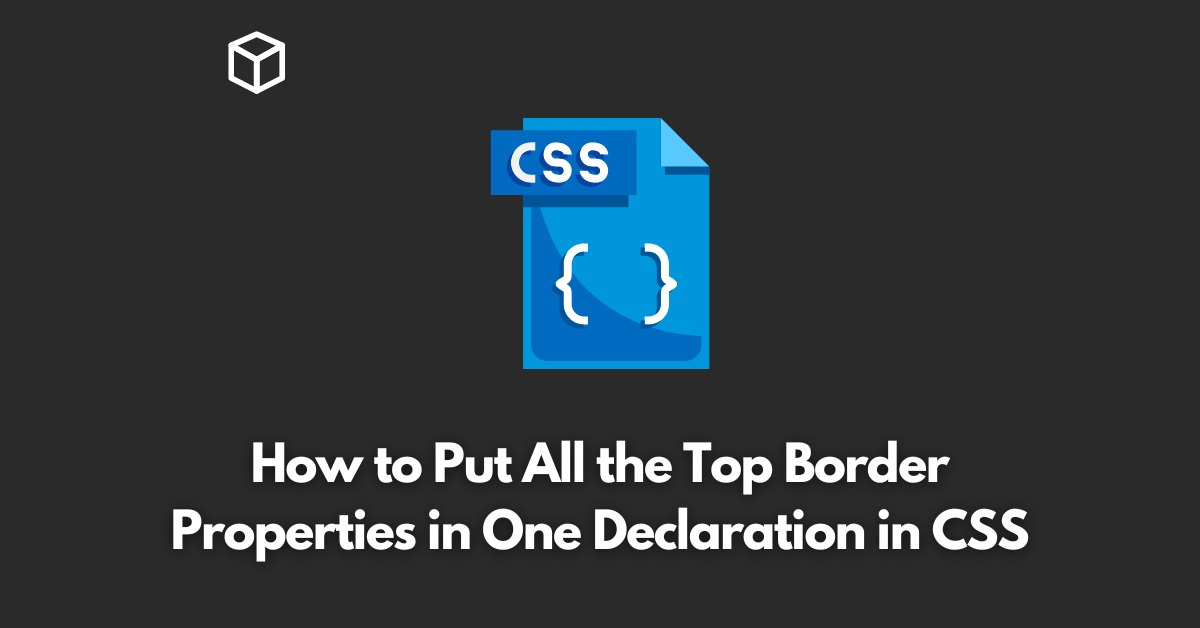As a web developer or designer, you understand the importance of writing clean, efficient code.
One way to do this is by combining multiple CSS properties into one declaration.
In this CSS tutorial, we’ll be discussing how to do this with top border properties.
First, let’s review the different properties that can be used to style the top border of an element. These include:
- border-top-width: the width of the top border
- border-top-style: the style of the top border (solid, dashed, etc.)
- border-top-color: the color of the top border
Normally, these properties would be written as separate declarations in your CSS file.
However, by using the shorthand property border-top, you can combine all three of these properties into one.
The syntax for using the border-top shorthand property is as follows:
border-top: width style color;
For example, to set a solid red top border that is 2 pixels wide, you would write:
border-top: 2px solid red;
You can also specify one or two values and let the browser interpret the defaults for the missing values.
For example, the following code will set a top border that is 2 pixels wide and solid, but the color will default to the current text color:
border-top: 2px solid;
It is also possible to use the shorthand property to set just the width and color of the top border, and leave the style as its default value.
border-top: 2px red;
Using the border-top shorthand property in this way not only saves space in your CSS file, but it also makes your code easier to read and understand.
Instead of scanning through multiple lines to find the properties for a specific border, they’re all contained within one declaration.
Keep in mind that, as with any shorthand property, the order of the values is important.
The width value must come first, followed by the style value, and then the color value.
In conclusion, combining multiple CSS properties into one declaration is a great way to write clean and efficient code.
By using the border-top shorthand property, you can style the top border of an element with just one line of code, making your CSS file smaller and more readable.




